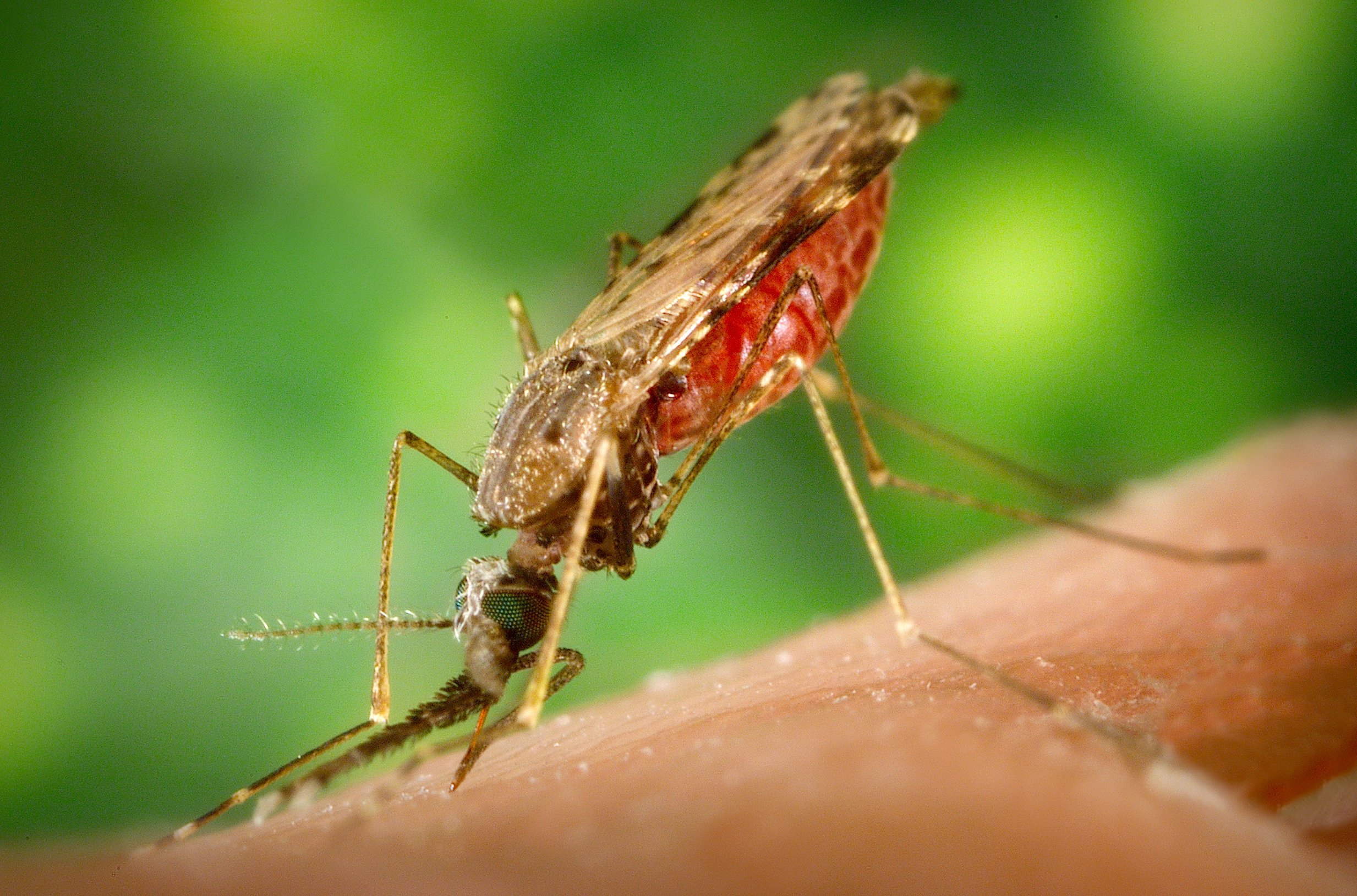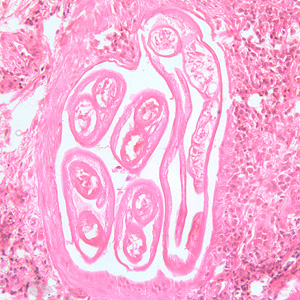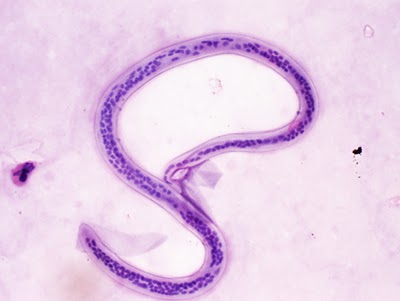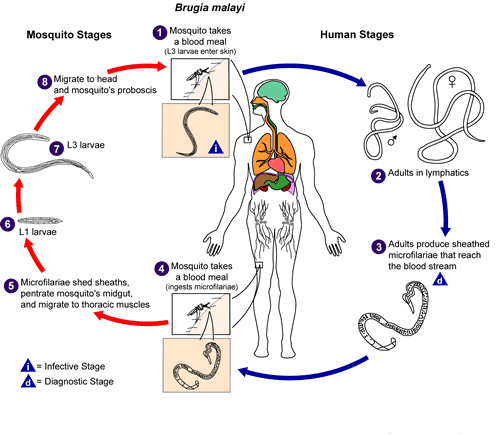Reproduction
The reproductive cycle of Brugia malayi is a unique and
interesting series. The life cycle begins when a mosquito
species belonging to the genera Mansonia, Aedes,
Culex, and
Anopleles ingests the larvae of Burgia malayi,
known as the microfilariae (Erickson et al 2009). These
mosquitos will consume the sheathed microfilariae from a
blood meal of an infected host of B. malayi.

Once
the microfilariae are in the mosquito they infiltrate the
gut wall of the mosquito where they shed their sheaths. The
microfilariae next progress to the thoracic muscles of the
mosquito and undergo a series of three molts (CDC 2013). The
first larvae stage (L1) consists of short, thick larvae that
survive for 5-7 days. The L1 then molt to become the second
larvae stage (L2), which are much more active in the
thoracic muscles. After another 5-7 days the L2 mature into
the infectious third larvae stage (L3) (Brugia malayi
Stanford University 2009). Once the third stage is complete
the infectious larvae migrate to the proboscis, the
needle-like body part of the mosquito used for feeding (AMCA
2013). The third larvae stage can remain living in the
probosics for as long as the mosquito remains alive (Erickson
et al 2009). This constitutes the life cycle of B. malayi in the mosquito; keep
in mind that no sexual reproduction occurs through this part of the life cycle.
 Once the infectious larvae are present in the proboscis of
the mosquito they are ready to begin the next phase of their
lifecycle. When a mosquito takes another blood meal, the L3
aggressively penetrate the skin through the bite wound of
typical hosts such as cats, monkeys, forest carnivores, and
humans (ADW 2003). Once the infected larvae are in the host
they migrate through internal tissues to the lymphatic
system. Here the L3 once again molt to become the fourth
larva stage (L4). Finally adult Burgia malayi (L5)
develop over the course of the next 6 months (Brugia
malayi Stanford University 2009). When it’s all said
and done B. malayi undergoes a series of 5 molts in
the process of becoming
an
adult.
Once the infectious larvae are present in the proboscis of
the mosquito they are ready to begin the next phase of their
lifecycle. When a mosquito takes another blood meal, the L3
aggressively penetrate the skin through the bite wound of
typical hosts such as cats, monkeys, forest carnivores, and
humans (ADW 2003). Once the infected larvae are in the host
they migrate through internal tissues to the lymphatic
system. Here the L3 once again molt to become the fourth
larva stage (L4). Finally adult Burgia malayi (L5)
develop over the course of the next 6 months (Brugia
malayi Stanford University 2009). When it’s all said
and done B. malayi undergoes a series of 5 molts in
the process of becoming
an
adult.
 The male and females now undergo sexual reproduction
in which the male twines and coils itself around a female
during intercourse. Amazingly a female produces an average
of 10,000 eggs everyday. Adult Burgia malayi can
survive in the lymphatic system anywhere from 5-15 years and
undergo sexual reproduction as long as 8-9 years (Brugia
malayi Stanford
University 2009). The product of this
sexual reproduction is the sheathed microfilariae, which enter the blood stream
of the host. Finally another mosquito will consume a blood meal from an infected
host, ingesting the sheathed microfilariae, thus starting the cycle all over
again (CDC 2013). Keep in mind B. malayi is not a free living
organsim and cannot survive without a host. Now that you understand the
life cyle of B. malayi, come take a more in-depth look at the interactions it has
with its hosts and other organisms.
The male and females now undergo sexual reproduction
in which the male twines and coils itself around a female
during intercourse. Amazingly a female produces an average
of 10,000 eggs everyday. Adult Burgia malayi can
survive in the lymphatic system anywhere from 5-15 years and
undergo sexual reproduction as long as 8-9 years (Brugia
malayi Stanford
University 2009). The product of this
sexual reproduction is the sheathed microfilariae, which enter the blood stream
of the host. Finally another mosquito will consume a blood meal from an infected
host, ingesting the sheathed microfilariae, thus starting the cycle all over
again (CDC 2013). Keep in mind B. malayi is not a free living
organsim and cannot survive without a host. Now that you understand the
life cyle of B. malayi, come take a more in-depth look at the interactions it has
with its hosts and other organisms.
←Form and Function Home Interactions→
